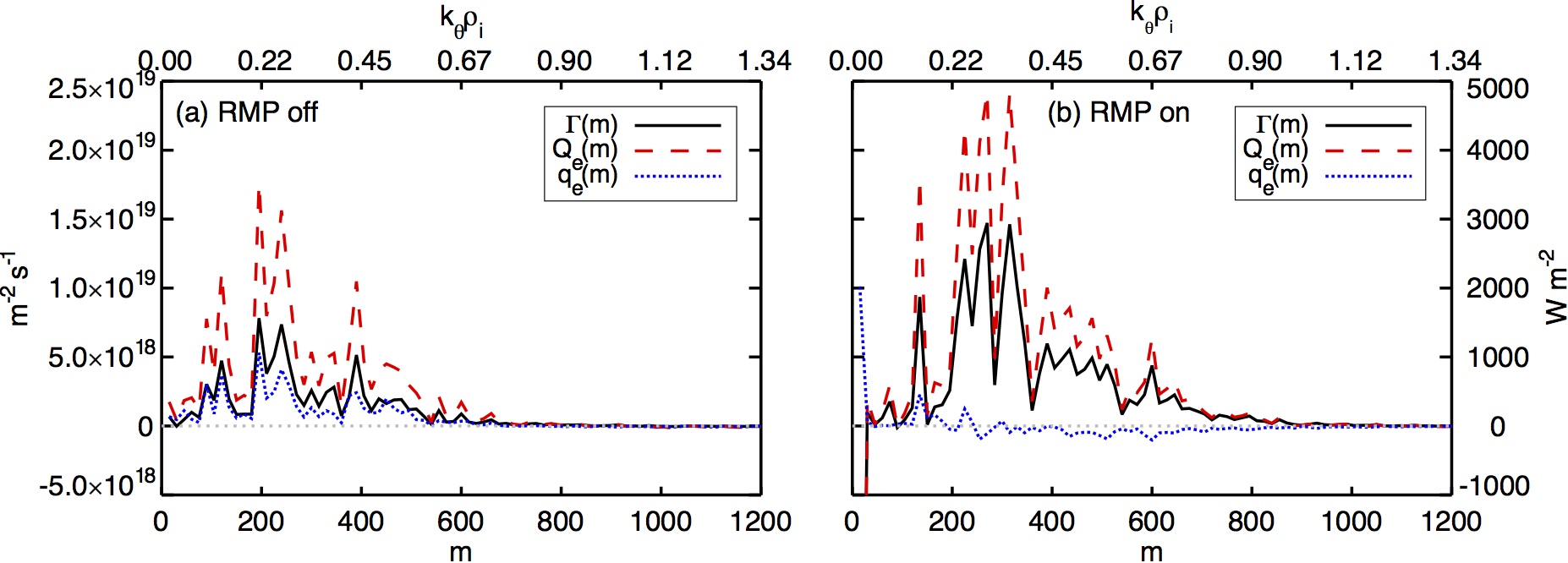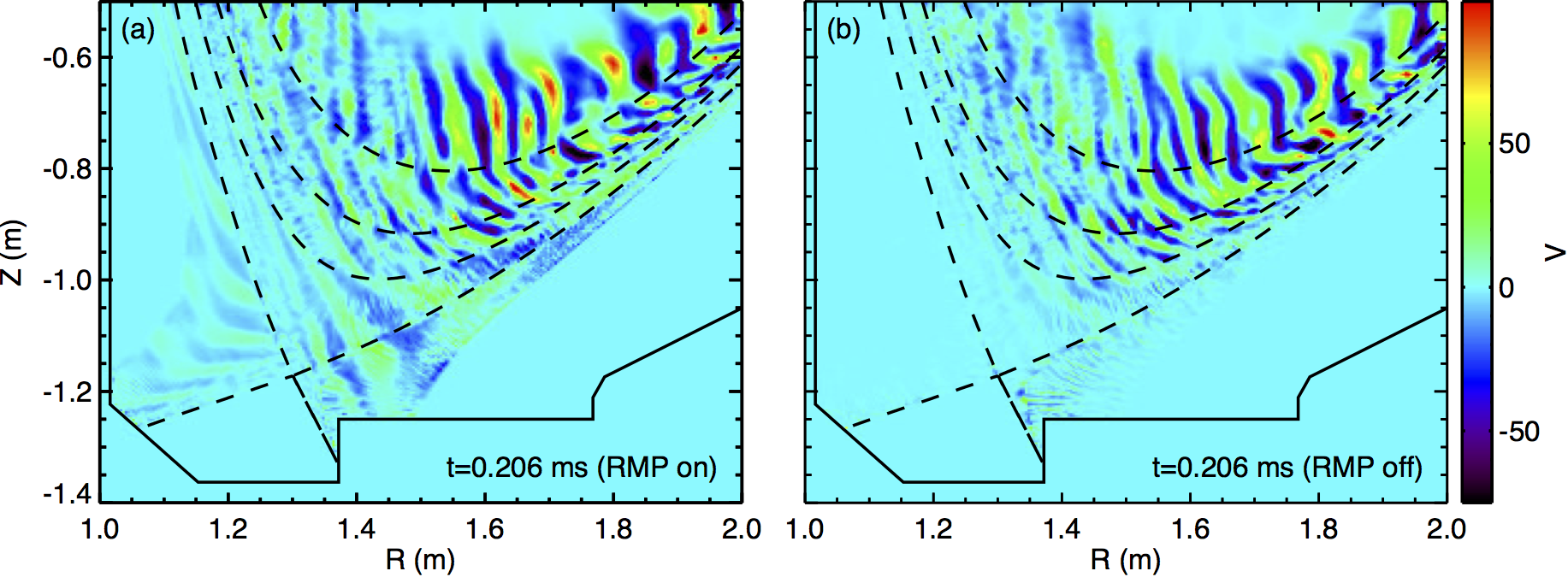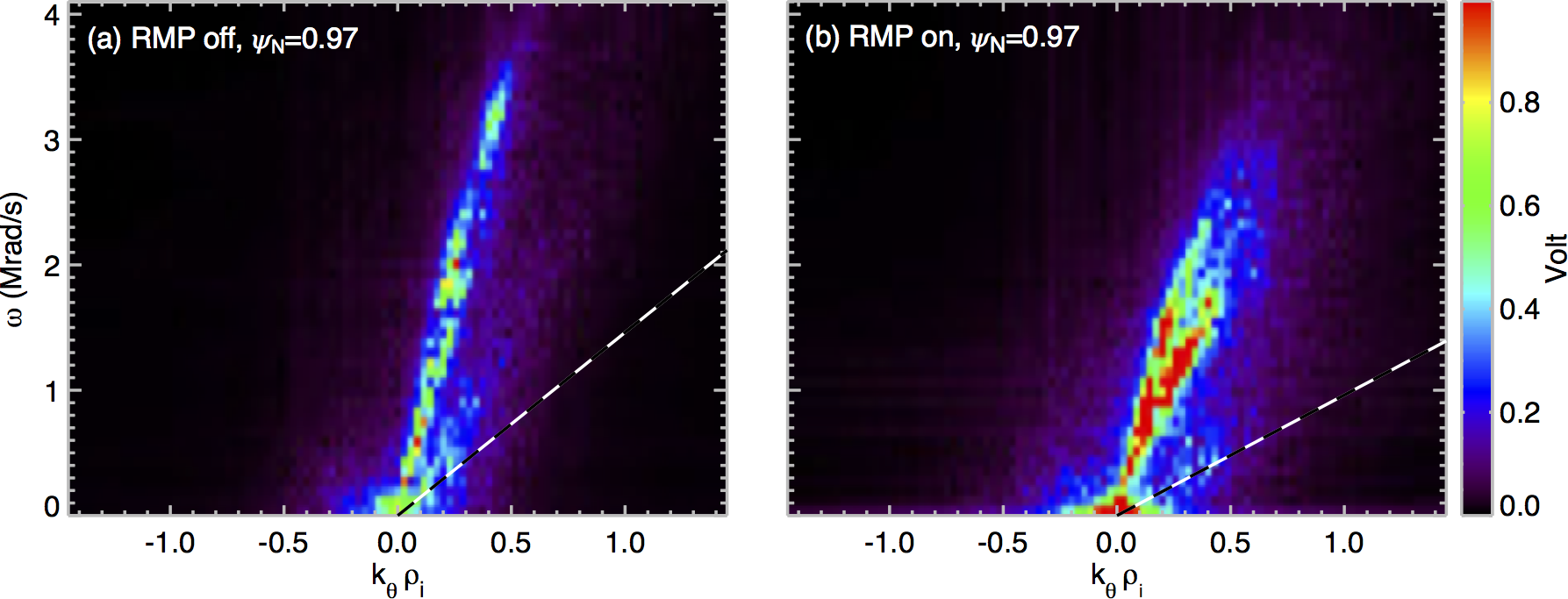Speaker
Description
The capability to suppress edge localized modes (ELMs) is crucial for the success of ITER because the transient heat loads on the divertor due to ELMs would reduce the lifetime of plasma facing components to unacceptable levels. ELMs can be suppressed with the application of resonant magnetic perturbations (RMPs). But a side effect of RMPs is enhanced particle flux, or density pump-out, that reduces the plasma density by up to 50% [Evans 2006] and can significantly degrade fusion efficiency. Kinetic-level understanding of these RMP-driven phenomena is essential for predicting ITER's performance but is incomplete as of yet. One particular puzzle from experimental observation [Evans 2006] and transport modeling [Hu 2019] is how RMPs interact with neoclassical and turbulent transport to produce density pump-out even before magnetic islands penetrate the pedestal top while at the same time keeping electron heat well confined (or even improving confinement). Advanced MHD-assisted gyrokinetic simulations with the code XGC in realistic divertor geometry based on a DIII-D H-mode discharge with $n=3$, even parity resonant magnetic perturbations (RMPs) now reproduce these two experimental observations.

This study utilizes the global total-f gyrokinetic particle-in-cell code XGC [Ku 2018] with an RMP field from a linear two-fluid M3D-C1 [Ferraro 2009] calculation for arguably the highest-fidelity study of RMP-driven plasma transport to date. The combination of neoclassical and turbulent particle flux, in the presence of neutral particle ionization and charge exchange, explains a 50% density pump-out in less than 100 ms in the pedestal up to normalized poloidal flux $\psi_N\approx 0.96$ as well as the suppression of electron heat flux in the steep pedestal slope ($\psi_N\approx 0.97$). The majority of the enhanced particle flux at $\psi_N \ge 0.985$, where the magnetic field is stochastic, is from neoclassical transport (cf. [Hager 2019]). Turbulent transport is enhanced at $\psi_N \le 0.985$, where nested flux-surfaces remain intact. On the $\psi_N\simeq 0.97$ surface, both the turbulent particle and electron energy fluxes increase significantly due to the RMPs (see Fig. 1). But the electron heat flux is largely suppressed as the result of a cancellation between outward heat flux at longer wavelength ($k_\theta \rho_i \le 0.3$) and inward heat flux at shorter wavelength ($k_\theta \rho_i \ge 0.3$).

The RMS turbulence amplitude is enhanced due to the RMPs throughout the pedestal with a strong $n=3$ component [Fig. 2 (a) and (b)]. Closer examination of the turbulent fluctuations shows that ion drift modes (ITG) are active from $\psi_N\approx 0.94$ inward and electron drift modes (TEM) are active from $\psi_N\approx 0.94$ outward with a median poloidal mode number $k_\theta \rho_i \approx 0.25$, where $\rho_i$ is the ion gyroradius. The most influential (to the transport fluxes) RMP-induced modification is the amplification of the TEMs from the pedestal shoulder $\psi_N=0.94$ outward. This is shown at $\psi_N=0.97$ in Fig. 3, where the amplification of the TEMs is consistent with a reduction of the ExB shearing rate. The insights gained from these high-fidelity simulations suggest that a reduction in the TEM mode growth rate by an external means, e.g. enhanced edge rotation, could be a method to reduce the density pump-out. Our gyrokinetic understanding will also improve longer time-scale/lower-fidelity (e.g. [Hu 2019]) modeling to predict the steady state plasma profiles under RMP field. These discussions will also be presented.

This work is supported by the US Department of Energy (DOE) under contract nos. DE-AC02-09CH11466, DE-FC02-04ER54698. Computing resources: INCITE program at ALCF (DE-AC02-06CH11357) and ERCAP award at NERSC (DE-AC02-05CH11231).
[Evans 2006] T. E. Evans, R. A. Moyer, K. H. Burrell et al., Nature Physics 2, 419-423 (2006)
[Hu 2019] Q. M. Hu, R. Nazikian, B. A. Grierson et al., Physics of Plasmas 26, 120702 (2019)
[Ku 2018] S. Ku, C. S. Chang, R. Hager et al., Physics of Plasmas 25, 056107 (2018)
[Ferraro 2009] N. M. Ferraro, S. C. Jardin, Journal of Computational Physics 228, 7742-7770 (2009)
[Hager 2019] R. Hager, C. S. Chang, N. M. Ferraro, R. Nazikian, Nuclear Fusion 59, 126009 (2019)
| Affiliation | Princeton Plasma Physics Laboratory |
|---|---|
| Country or International Organization | United States |
